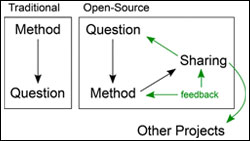Simple, Fair, and Open — Meeting the Needs of Authors and Readers
Publishing is crucial for the career of any researcher. But while the need to publish remains unchanged, the publishing landscape is constantly shifting. Authors are facing increasing pressure to publish in journals that meet various “open access” requirements. These requirements fall along three lines: allowing free access to read published work; allowing free reuse of data and figures; and reducing publishing costs for authors and institutions. It can be difficult for authors to identify which journals meet their publication needs, especially in the face of changing funding expectations.
“Both eNeuro and JNeurosci have taken major steps to make the publishing process straightforward and fair while addressing barriers to access that authors, readers, and institutions face.”Fortunately, JNeurosci and eNeuro take the guesswork out of staying ahead of these changes, ensuring that authors can remain focused on their research. Dedicated to being run by and for scientists, both journals have taken major steps to make the publishing process straightforward and fair while addressing barriers to access that authors, readers, and institutions face.
Reader Accessibility: JNeurosci
Not content to be the most cited and trusted journal in neuroscience, JNeurosci is leading the way regarding open access to, and reuse of, published work. Since 2014, all articles are published under the Creative Commons Attribution 4.0 International (CC-BY) license — one of the most liberal licenses in the science publishing world — which gives readers permission to reuse published materials with attribution to the authors. Complementing this liberal reuse policy, JNeurosci manuscripts become freely available after the six-month, subscription-access-only window; JNeurosci subscriptions support journal operations and other SfN programming.
Later in 2020, the standard author license will allow authors to share their final, fully peer-reviewed manuscript at any time, including by depositing the manuscript in open access or institutional repositories. This adjustment will enable more authors to comply with their funder and institutional mandates, including the Europe-led Plan S, which goes into effect in 2021.
New Ways of Expanding Access: eNeuro
“Dedicated to fairness and transparency, eNeuro provides a number of unique tools that make publishing, reading, and building on research simple.”eNeuro, launched in 2014, has always been open access: all articles are immediately available without a subscription and published under a CC-BY license. Dedicated to fairness and transparency, eNeuro provides a number of unique tools that make publishing, reading, and building on research simple.
For example, eNeuro recently introduced Open Source Tools and Methods articles, which provide blueprints for the latest tools and methodologies. These short papers provide detailed instructions for tools ranging from syringe pump controllers to joystick manipulandum for mice, made with low-cost, readily available materials. This plug-and-play approach to tools and methods is crucial in a field defined by rapid technological development.

Under an open-source approach, the discovery of new tools and methods is driven by research questions and the ability to freely share information. Credit: White et al. eNeuro 29 July 2019, 6 (4) ENEURO.0223-19.2019; DOI: https://doi.org/10.1523/ENEURO.0223-19.2019.
Removing Financial Barriers
Publishing fees can be prohibitively expensive, particularly in economically developing countries. To ensure scientists across the globe can afford to publish, both JNeurosci and eNeuro automatically offer waived or reduced publication fees for scientists working in lower-income countries.
Beyond addressing the cost of publishing, JNeurosci has actively worked to remove and reduce any subscription fee barriers by partnering with the HINARI Access to Research Health programme. Founded by the World Health Organization, the program provides more than 50 countries free or reduced-cost access to 1,600 biomedical and scientific journals.
Through these changes, SfN’s journals have continued to do what they’ve done for nearly 40 years: provide a publishing outlet that is not only rigorous, but straightforward, accessible, and responsive.























